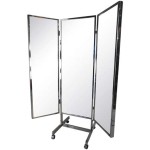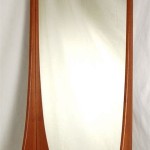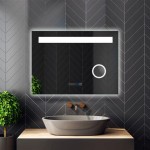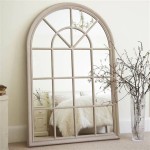How To Put A Heavy Mirror On Plasterboard
Hanging a heavy mirror on plasterboard can seem daunting, but with the right tools and techniques, it can be achieved safely and securely. This article outlines the necessary steps to ensure your mirror remains firmly in place.
1. Assess the Mirror's Weight and Dimensions
Before beginning, accurately determine the mirror's weight and dimensions. This information is crucial for selecting the appropriate hanging method and hardware. Consult the manufacturer's specifications or use a bathroom scale for weight. Precise measurements of the mirror's length and width will aid in locating wall studs and planning the installation layout.
2. Locate Wall Studs
Locating wall studs is essential for providing maximum support, especially for heavier mirrors. Studs typically run vertically every 16 or 24 inches on center. Use a stud finder to pinpoint their exact location. Mark the stud locations lightly with a pencil for easy reference during installation.
3. Choose the Right Hanging Hardware
The choice of hanging hardware depends on the mirror's weight and the availability of studs. For heavier mirrors, using wall studs is highly recommended. Heavy-duty mirror hangers, D-rings, or J-hooks combined with appropriate screws are suitable options. If studs are not available or the mirror is exceptionally heavy, consider using specialized plasterboard fixings like toggle bolts, molly bolts, or hollow-wall anchors.
4. Prepare the Wall and Mirror
Once the hanging hardware is chosen, prepare the wall and the mirror for installation. If using wall studs, pre-drill pilot holes at the marked locations. The pilot holes should be slightly smaller than the screw diameter to prevent the wood from splitting. If using plasterboard fixings, follow the manufacturer's instructions for installation. On the back of the mirror, attach the chosen hanging hardware securely, ensuring it's level and appropriately spaced.
5. Secure the Mirror to the Wall
With the wall and mirror prepared, carefully lift the mirror and align the hanging hardware with the wall fixings. If using screws into studs, slowly drive the screws in, ensuring they are firmly secured. If using plasterboard fixings, insert them according to the manufacturer's instructions. For heavier mirrors, it is advisable to have assistance during this step to prevent accidents and ensure proper alignment.
6. Check Stability and Adjust if Necessary
After securing the mirror, thoroughly check its stability. Gently push on different parts of the mirror to ensure it is firmly attached and does not wobble. If any movement is detected, tighten the screws or adjust the hanging hardware as necessary. For heavier mirrors, consider adding additional support brackets or adhesive to enhance stability and prevent long-term shifting.
7. Consider Using Mirror Adhesive (Optional)
While not always necessary, using mirror adhesive can provide additional security and stability, particularly for larger or heavier mirrors. Apply the adhesive to the back of the mirror in a zig-zag pattern before hanging. This will help distribute the weight evenly and prevent the mirror from tilting or shifting over time. Follow the adhesive manufacturer's instructions regarding drying time and weight limitations.
8. Using French Cleats for Heavy Mirrors
For exceptionally heavy mirrors, French cleats offer a robust and secure hanging method. A French cleat system consists of two interlocking pieces of wood, one attached to the wall and the other to the back of the mirror. The angled design of the cleats creates a strong, weight-bearing connection. This method is particularly useful for large, heavy mirrors where traditional hanging hardware may not be sufficient.
9. Safety Precautions
Always prioritize safety when hanging heavy objects. Wear appropriate protective gear, including gloves and eye protection. If the mirror is exceptionally heavy, enlist the help of another person. Use a sturdy stepladder or platform to reach higher areas safely. Never attempt to hang a mirror that exceeds the weight limit of the chosen hanging hardware or the wall's capacity.
By following these steps and considering the specific weight and dimensions of your mirror, you can successfully and safely hang a heavy mirror on plasterboard, ensuring it remains securely in place for years to come.

Hanging Heavy Mirror On Plaster Walls 6 Steps With Pictures Instructables
How To Hang A Heavy Mirror On Drywall Quora

How To Hang A Heavy Mirror On Plasterboard Timber Framed Wall

How To Hang A Large Or Heavy Mirror

How To Hang A Very Heavy Picture Or Mirror The Best

How To Hang A Heavy Mirror With Pictures Wikihow

How To Hang A Heavy Mirror

Hang A Mirror On Plasterboard Wall Soraya Interiors

How To Hang A Mirror The Ultimate Step By Diy Guide Aspect Wall Art

How To Hang A Very Heavy Picture Or Mirror The Best








